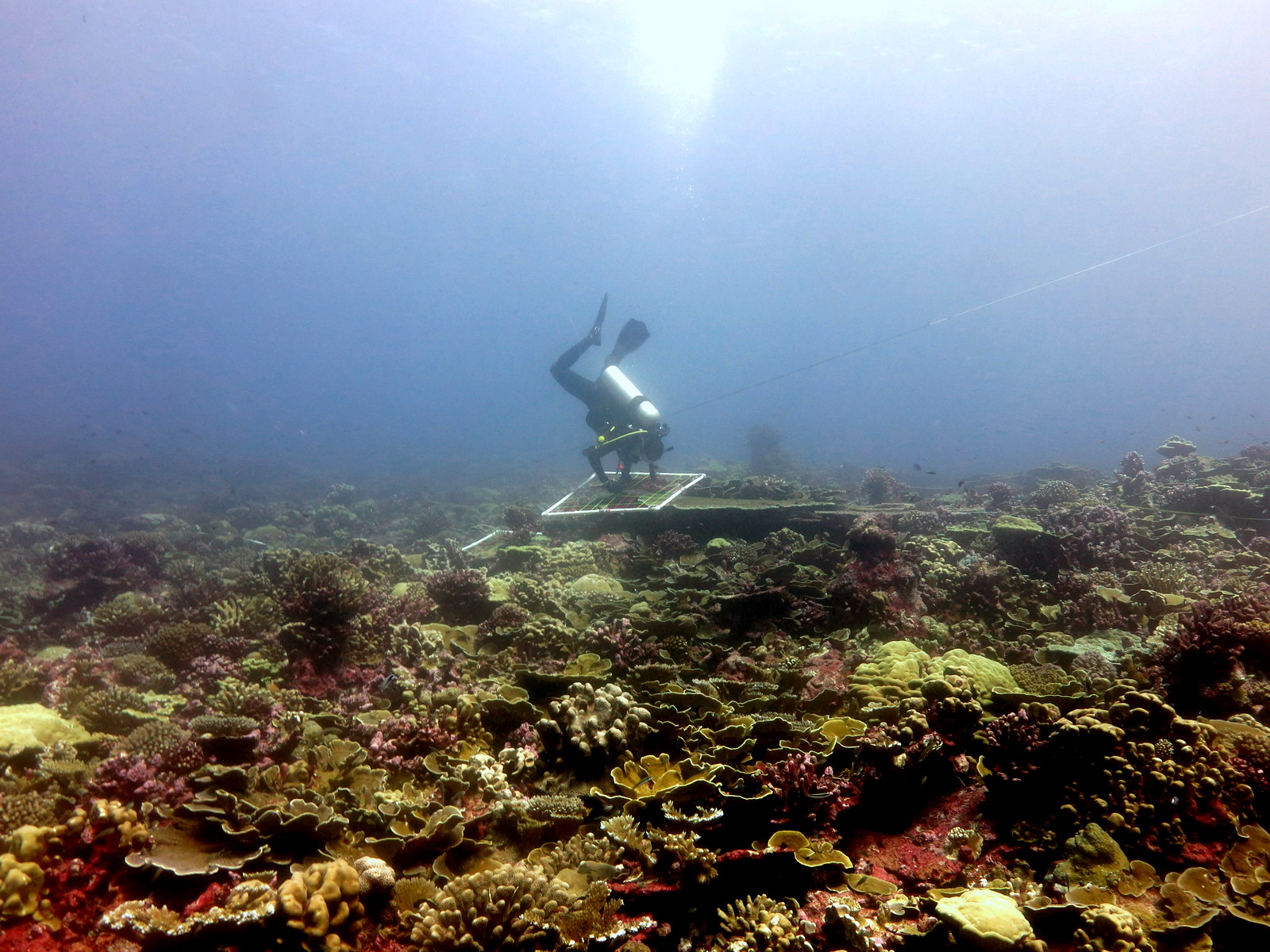
One of my favourite parts of diving is in the first moments of descent, just after my head slips beneath the sea surface and I am in transition between sinking and floating; passing from the air to the underwater world. Spending time in the ocean allows a glimpse into the strange and wonderful marine environment. I look up to see the sea surface rocking overhead with passing waves, fish swimming by unfazed by our presence, drifting through curtains of seaweed, metres deep under the ocean.
As a scientific diver, I have worked in many different marine ecosystems – from the waters of British Columbia’s coast to coral reefs in the Pacific – including on the world’s largest atoll, Kiritimati (Christmas) Island, where I witnessed dramatic and rapid deterioration of the reef brought on by coral bleaching this year.
In each place, I have brought information on these incredible marine ecosystems to the surface to improve marine conservation and management. I have learned to ask a few important questions to ensure that the data collected under the sea makes a difference where decisions are made:
What does this information tell us about the state of the marine ecosystem?
There is an amazing array of life in marine ecosystems. To make effective marine conservation decisions we need to figure out how to encapsulate this ocean of information so that it can be understood and used for decision-making. Ecological indicators, such as the diversity of species present (biodiversity), the size of important fish species, or the presence and absence of certain sensitive species, help to measure of the health of ecosystem components. Selecting the appropriate indicators to accurately represent the condition of marine environments is a critical task.
How will this information change over time?
The information collected on a survey provides a window into the state of the marine system at that time. Once management measures are decided upon for a given area, this data can be used as a baseline from which to evaluate progress and the effectiveness of actionsor policies. Establishing the capacity and resources for monitoring, and continuing to bring information on the marine environment to the surface, is necessary to ensurethat management decisions are having their intended impacts on the health of the ecosystem and that we are able to adjust actions with changing environmental conditions.
Will the information be communicated effectively to the right people?
Probably the most critical question is about how to get the information to the right people to have an impact. As the body of scientific information on marine ecosystems increases, scientists have a responsibility to ensure that our data reaches – and is understood by – decision makers. Science needs to be the foundation of marine policy, but decisions also need to account for many other factors, including values, politics, and economics.
Consequently, scientists have a duty to make the information they produce understandable, relevant, and credible. So once we have analyzed our data, we need to report it in a format that is useable by a broad audience, and communicate it effectively to the people charged with protecting the marine environment, as well as to others who care about these places and support our work.
An intriguing recent article in the journal Nature, by ocean science communicator Nancy Baron, tells some revealing stories about choosing the right words to translate mountains of data into a digestible format. As Baron explains, by using the right avenues and engaging the public, scientists can become agents of change for the systems they study.
That’s one reason why I’m excited to be working with West Coast Environmental Law on their marine conservation program. Linking science and policy is essential to achieving our conservation objectives. WCEL’s work to ensure that our environmental laws are strong and effective means making sure that those laws are grounded in science. As British Columbia works toward implementing marine spatial plans and increasing marine protection in the Great Bear Sea on the north coast and in the Salish Sea, I’m looking forward to bringing together all the scientific information we need to make sound policy decisions and protect the marine environment.
By Maryann Watson, Marine Campaigner